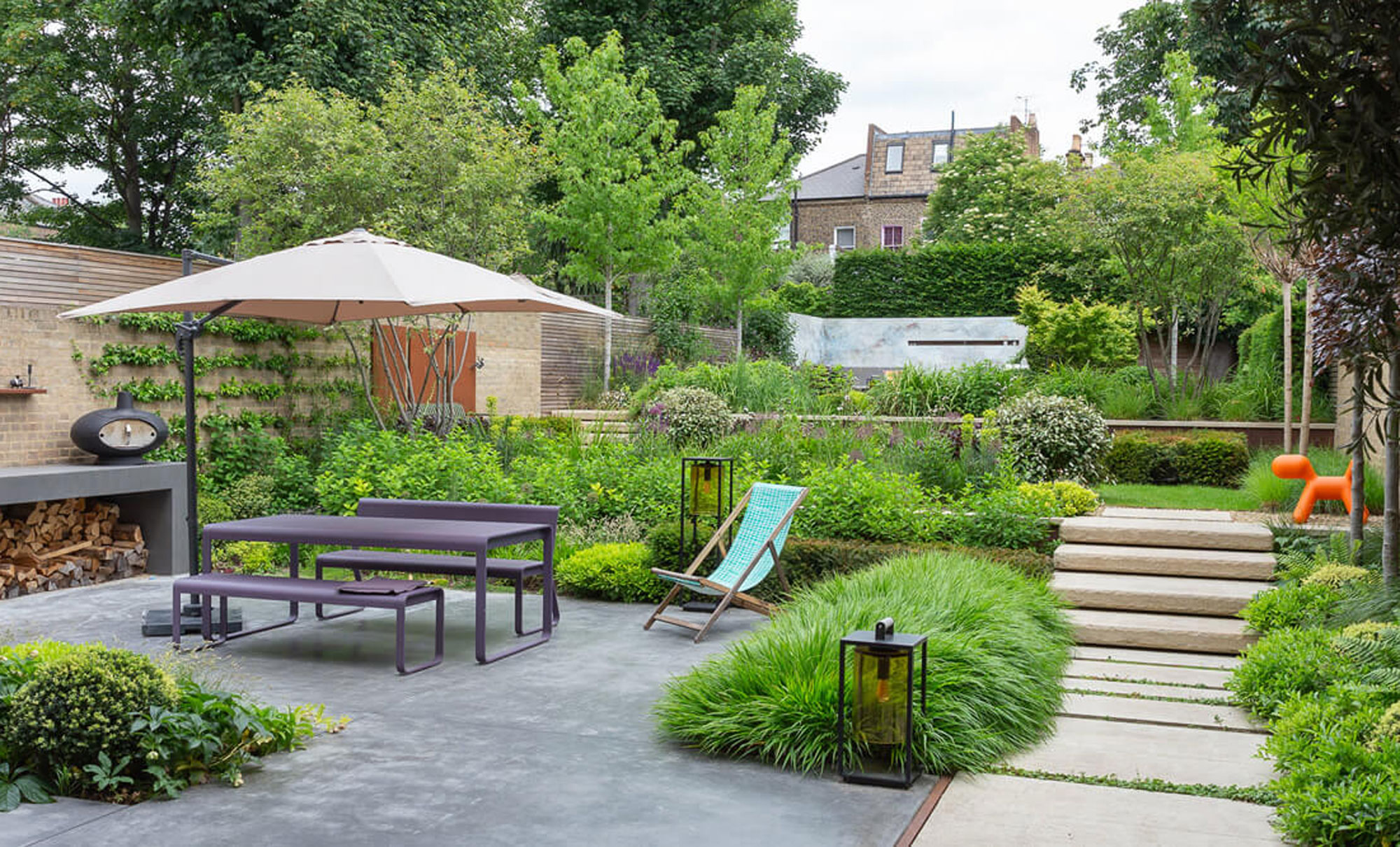Smart gardening explained – 6 ways to take the hard work out of yard work
Smart gardening can take the hassle out of time-consuming garden maintenance. Here's how you can automate your outdoor space


Smart gardening has the potential to be a real game-changer when it comes to looking after your outdoor space. While some smart tech in and around the home offers convenience, a shortcut or a way to keep an eye on your property, smart garden tech offers to shoulder the hard work of keeping your garden looking its best. Well, some of it anyway.
Yes, there may be some parts of maintaining your garden that a smart gadget hasn't been invented for yet, but you might find yourself surprised at what clever garden tech is already on the market. These garden ideas range from your upkeep basics such as watering and mowing lawns, to smart ways to ensure you're ready to act fast to ensure your garden gets what it needs.
Here, we explore the ways in which you can start to set up a smart garden, plus get expert advice on how each piece of tech works.
What is smart gardening?
Smart gardening refers to any technology that can be used to help you grow plants or maintain your garden. There are plenty of clever garden lighting ideas which can be linked to smart systems too, but for the purposes of this article, we're focusing on ideas that focus on keeping your garden looking its best.
The best smart gardening gadgets have associated apps, which can be used to easily control devices on the go, while some can even be automated so that they don't require input from you at all for upkeep of your space. This may be built into the device itself, or you may be able to set up relationships through applets like IFTTT (If This, Then That).
1. Set up smart lawn mowing
The robot lawnmower is possibly the best-known example of smart gardening. However, for those who haven't tried one before, it might feel a bit of a novelty item, more good in theory than in practice. However, modern automated lawnmowers are worth exploring if you only have a dated concept of what they entail.
So how do they work? 'The iMow, the STIHL robotic mower, operates within a perimeter wire so it will not mow outside the area where this is fitted,' explains ul Hicks, marketing and product manager at STIHL. 'To fit this boundary you will need to peg out the perimeter wire using fixing pegs, which ensures it is completely bespoke to your garden. The wire sits on the soil surface but will be quickly covered by grass hiding it from view.'
The Livingetc newsletters are your inside source for what’s shaping interiors now - and what’s next. Discover trend forecasts, smart style ideas, and curated shopping inspiration that brings design to life. Subscribe today and stay ahead of the curve.

For most outdoor lawnmowers, you'll need to have an outdoor power socket, and space for a docking machine. There aren't, at present, solar-powered robot lawnmowers on the market.
The best robot lawnmowers will include even more smart features which make them a useful garden helper. 'They can automatically react to changing circumstances like rain or a user cancellation and intuitively make up the lost time on another day,' explains Paul. 'On STIHL connected models, it will also check the weather forecast so if it’s likely to rain tomorrow, it can do some extra mowing today.'
It pays to research your robot lawnmower carefully. Look for a model that has a range that suits your garden size, and that's able to cope with slopes if your garden has uneven terrain. This will usually be set as a maximum incline in degrees.
2. Automate your garden's watering system
Whatever way you decide to water your garden manually, it can be a real chore. Filling and porting watering cans around can be time-consuming to say the least, while setting up and moving sprinkler systems around your space means you'll need to give your garden near-constant attention.
'Smart automatic watering systems especially give peace of mind when you go away on holiday and means you no longer need to rely on neighbors or friends and family to pop in,' says Sara Dixon, marketing manager at Hozelock.
Smart watering can also be better for the environment too, offering a way of saving water. 'Another key benefit of an automatic watering system, is that it delivers more controlled watering directly to the roots, reducing the level of water wastage through evaporation or inaccurate watering,' Sarah explains. 'Not only does this benefit the environment by saving water, but it can also help save money on water bills.'
Most smart watering systems work for automated homes by means of a hub connected to and controlling a remote tap, which can be turned on and off to automatically water your beds.
'For example, larger gardens or those with zoned areas with different requirements, such as pots or raised beds, gardeners can utilize the Hozelock's Cloud Controller’s ability to control up to four remote tap units and set up to ten watering schedules per day,' says Sarah.

3. Use soil sensors to monitor plants
While, by itself, an automatic watering system can deliver preset levels of water to your flower beds and pots, when used in conjunction with a soil sensor, you can get a real sense of the soil's water needs. A device like Gardena's Soil Moisture Sensor will ensure that an automatic watering system doesn't start at all if the soil moisture level is past a limit, avoiding unnecessary overwatering.
Soil moisture sensors can be moved around, so used to monitor different areas of the garden as required, including in pots and raised beds if container gardening is more your thing. Even if not connected to an automatic irrigation system, they can still be used to detect water moisture levels, linking to an app on your phone, even if that then means you just know when you need to bust the watering can out if the soil is too dry.
4. And weather stations to keep track of the air temperature
Weather stations are another form of smart garden sensor, but one that detects changes in the air temperature, humidity and more, ensuring that you can react quickly, or often pre-emptively, to protect your garden plants against the elements.
It's basically a device that can be used to become your own weather forecaster, using data to help predict incoming hot weather, rain and thunderstorms, or frost and ice. All of these can be useful in taking a course of action so that you can adjust your gardening ahead of time.

5. Consider an automated weeding robot
Weeding has got to be one of the very worst garden upkeep chores going - the cause of many a headache, and undoubtedly backache too.
Did you know that in the US and Canada, there's an automatic weeding machine which can be used to prevent weeds from taking over your plot, made by the same people who invented the Roomba robot vacuum?
'The Tertill uses specially designed wheels to churn up the soil disrupting weed seeds as they germinate,' explains Helen Greiner, CEO of Tertill Corporation. 'If any weeds do manage to sprout, Tertill cuts them down with its string trimmer. Tertill uses sensors in its shell to tell plants from weeds. If something is tall enough to touch its shell, Tertill thinks it's a plant and leaves it alone. If something passes under the robot, it's a weed and the robot cuts it. Included metal guards protect young plants until they grow tall enough for the robot to sense them.'
As far as we're aware, this product is a one of a kind, but a brilliant example of new innovations in smart garden tech. Plus, it's easy to use too, making it one of the best smart garden gadgets we've seen.
'You just place it in a weed free garden to start, press the button to wake it up, and again to tell it to go,' says Helen. 'That's it. Tertill is solar powered, so it never needs to be charged, requires no programming, and the only maintenance is to replace the whacker string when it wears down.'

6. Keep an eye on your smart garden tools
Maintenance of garden tools is an important task, especially at the start of the gardening seasons, if they've been left to gather dust for months and months on end. Thankfully, modern advances are making it easy to know what shape your smart gardening tools are in, using automatic systems. This is a plus even for low maintenance gardens, as it means spending less time worrying that your tools aren't up to the jobs you need them for.
'Garden tools, such as pole pruners, robotic mowers and leaf blowers, need regular servicing to ensure they always work as efficiently as possible. Having the ability to monitor the service status of your garden tools from the comfort of your own home, without having to even turn them on,' says STIHL's Paul Hicks.
STIHL, for example, has a Smart Connector, which can be attached to any of its garden tools, whether petrol, electric or cordless, which transmits data back to an app.
Are there any disadvantages to smart gardening?
The primary issue when it comes to smart gardening tech is the expense. These smart systems tend to be much more expensive than their non-automated contemporaries.
There are also some considerations for smart systems to ensure they're practical for your home. This is especially the case for the likes of robot lawnmowers. 'You do need have a space of 3 foot from open water such as ponds, streams or swimming pools,' explains Paul Hicks from STIHL, 'and if you have young children, pets or other animals in the garden it is worth considering how the robotic mower will fit into your lifestyle.'

Hugh is Livingetc.com’s editor. With 8 years in the interiors industry under his belt, he has the nose for what people want to know about re-decorating their homes. He prides himself as an expert trend forecaster, visiting design fairs, showrooms and keeping an eye out for emerging designers to hone his eye. He joined Livingetc back in 2022 as a content editor, as a long-time reader of the print magazine, before becoming its online editor. Hugh has previously spent time as an editor for a kitchen and bathroom magazine, and has written for “hands-on” home brands such as Homebuilding & Renovating and Grand Designs magazine, so his knowledge of what it takes to create a home goes beyond the surface, too. Though not a trained interior designer, Hugh has cut his design teeth by managing several major interior design projects to date, each for private clients. He's also a keen DIYer — he's done everything from laying his own patio and building an integrated cooker hood from scratch, to undertaking plenty of creative IKEA hacks to help achieve the luxurious look he loves in design, when his budget doesn't always stretch that far.